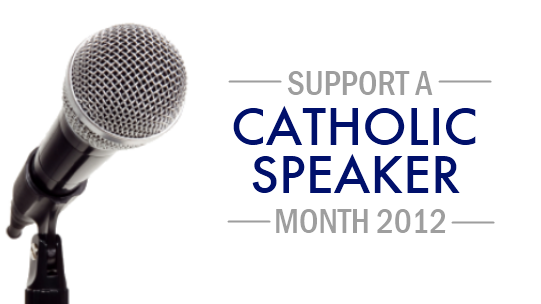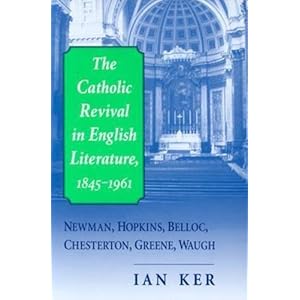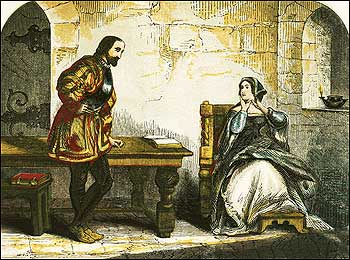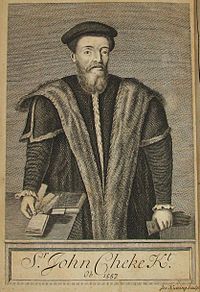I'll be on the
Son Rise Morning Show this morning at 7:45 a.m. Eastern/6:45 a.m. Central to discuss the Feasts of Our Lady of Ransom and Our Lady of Walsingham.

Until the year 2000 when the Vatican approved the new calendar for the Dioceses of England and Wales, today was the Feast of Our Lady of Ransom. A guild was founded in 1887 with "three special intentions:
~~the conversion of England and Wales in general, and of individuals in particular;
~~the rescue of apostates and those in danger of apostasy;
~~the forgotten dead, who, owing to the Reformation, or to being isolated converts, or other causes, are without special Masses and prayers."
The origins of the feast and its connection to St. Raymond of Penyafort and the Mercedarian Order:
The Blessed Virgin appeared in 1218 in separate visions to St. Peter Nolasco, St. Raymond of Penafort and James, king of Aragon, asking them to found a religious order dedicated to freeing Christian captives from the barbarous Saracens or Moors, who at the time held a great part of Spain. On August 10, 1218, King James established the royal, military and religious Order of our Lady of Ransom (first known as the Order of St. Eulalia, now known as the Mercedarian Order), with the members granted the privilege of wearing his own arms on their breast. Most of the members were knights, and while the clerics recited the divine office in the commanderies, they guarded the coasts and delivered prisoners. This pious work spread everywhere and produced heroes of charity who collected alms for the ransom of Christians, and often gave themselves up in exchange for Christian prisoners. This feast, kept only by the Order, was extended to the whole Church by Innocent XII in the 17th century.
More
here from the same site.
Since the year 2000, September 24 is the Feast of Our Lady of Walsingham, and last year the shrine(s) celebrated the 950th anniversary of the founding of "England's Nazareth". Today in Walsingham there are two shrines--one Catholic, one Anglican. Thomas Cromwell, Henry VIII's vice regent in these spiritual matters, had the first (Catholic) shrine destroyed along with other shrines to the Mother of God throughout England. The statues were brought to the Chelsea area of the London and destroyed in a bonfire. Walsingham calls itself "England's Nazareth" and promotes both the Catholic and the Anglican shrines on its tourism website.
In 1893, Pope Leo XIII promised: "When England returns to Walsingham, Our Lady will return to England." Even after Pope Leo restored the shrine of Our Lady of Walsingham in 1897, it took some time for [Catholic] England to return to Walsingham. In 1922, the Anglo-Catholic Father Hope Patton established the Anglican shrine of Our Lady of Walsingham. In 1934, the Archbishop of Westminster, Cardinal Bourne, led a major pilgrimage to the Catholic Walsingham and it became the National Marian Shrine.
With Pope Benedict XVI's foundation of the first Personal Ordinariate for groups of former Anglicans on January 15, 2011, named for Our Lady of Walsingham, Our Lady's return to England was even more firmly established. According to this
CNA story, a recent pilgrimage there highlighted the upcoming Year of Faith:
Bishop Mark Davies of Shrewsbury has encouraged English Catholics to prepare for the Year of Faith by embracing and proclaiming Catholicism in its entirety.
“We are invited together with Simon Peter and with his successor Benedict our Pope to profess our Catholic faith in fullness and with renewed conviction,” Bishop Davies said Aug. 26 during a pilgrimage to the Marian shrine of Walsingham in Norfolk.
Bishop Davies gave two homilies during his pilgrimage to England’s national Marian shrine. In a sermon to around 1,500 members of the Youth 2000 movement, he reminded the congregation of the real presence of Jesus Christ in the Blessed Sacrament. . . .
In his later homily to the Latin Mass Society, Bishop Davies recalled how Walsingham “was once the focus of world attention” and a center of pilgrimage “renowned alongside Jerusalem and Rome,” until it was destroyed during the 16th-century English Reformation.
“These very ruins of Walsingham towards which you will walk the last ‘Holy Mile’ of this pilgrimage serve to remind us that each successive generation must make that choice for the faith again,” he said.
The homily was delivered during a Traditional High Mass which concluded a three-day, 55-mile walking pilgrimage by the Latin Mass Society. Bishop Davies recalled the words of the 19th-century Pope Leo XIII who predicted that “when England returns to Walsingham, Our Lady will return to England.”
“In this way we will pass on the flame of faith and so leave to new generations not the ruins of a Christian past but the faith which Walsingham has represented for almost a thousand years.”
O alone of all women, Mother and Virgin, Mother most happy, Virgin most pure, now we sinful as we are, come to see thee who are all pure, we salute thee, we honour thee as how we may with our humble offerings; may thy Son grant us, that imitating thy most holy manners, we also, by the grace of the Holy Ghost may deserve spiritually to conceive the Lord Jesus in our inmost soul, and once conceived never to lose him. Amen.
All Holy and ever-living God, in giving us Jesus Christ to be our Saviour and Brother, You gave us Mary, His Mother, to be our Mother also; grant us, we pray you, to live lives worthy of so great a Brother and so dear a Mother, that we may come at last to you the Father of us all, Who lives and reigns for ever. Amen.
Our Lady of Walsingham, Pray for us.
























